“The key to immortality is first living a life worth remembering.” — Tony Hawk
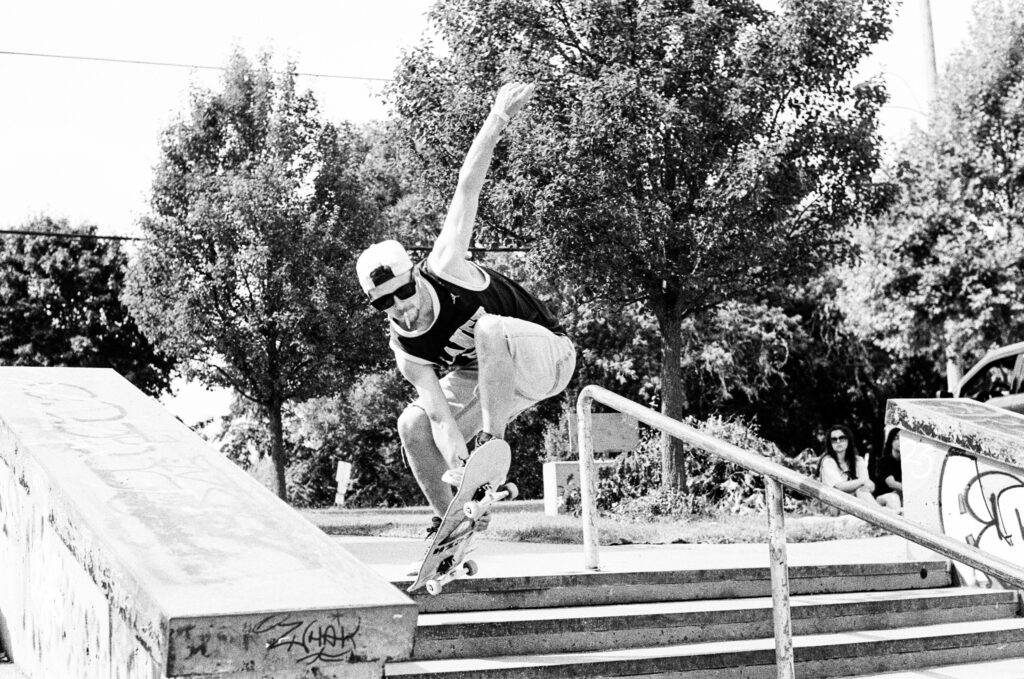
In 1988, when I was in grade 3, my father bought me a copy of Thrasher Magazine. It became my childhood bible. I studied that gospel until the pages fell out and all I was left with was the ads in the back. By grade 4, I’d graduated from a magazine to a real skateboard — an Eddie Reategui board by Alva with gorgeous rainbow-coloured grip tape. Unfortunately, my enthusiasm didn’t match my abilities. The highlights of my skateboarding career include ollieing onto a small curb and a stationary kickflip on soft grass.
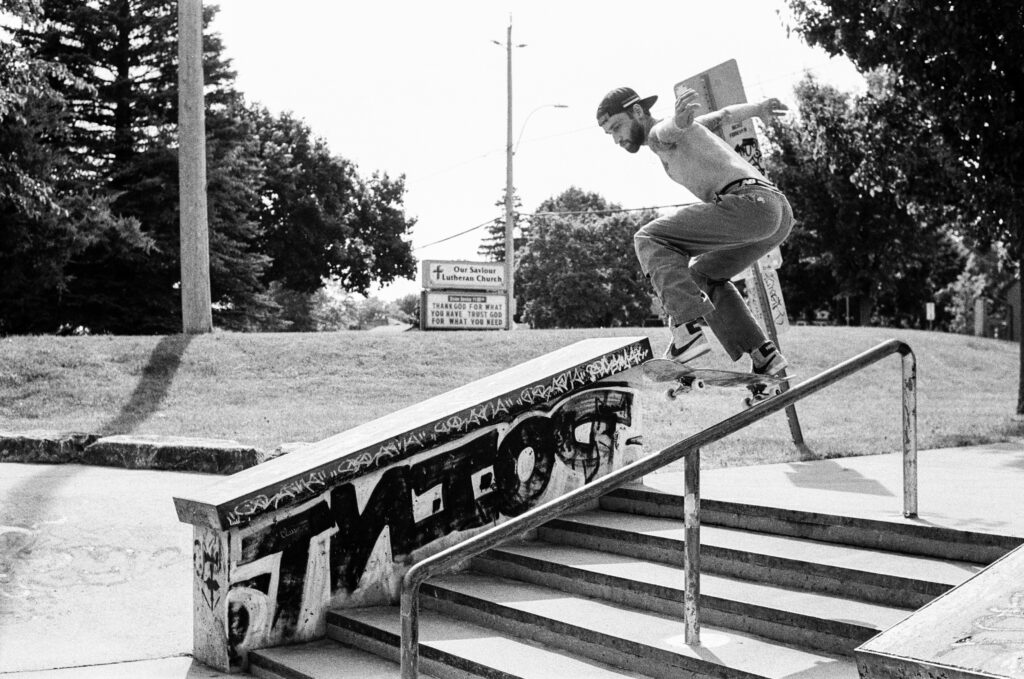
If I had any foresight, I would have ditched the board, picked up a camera, and photographed my friends, some of whom were amazing skateboarders. But it would be another 20 years before I started tinkering with film cameras and by that time my mates had all traded nosegrinds for desk jobs, midlife crises, and divorces. But this past summer I was given a second chance. One day while doomscrolling Instagram I was fed an ad about a local London, Ontario, skateboard competition, called the Kiwanis Jam. I marked down the date and then confirmed with my wife that I had the green light to be cool for a day.
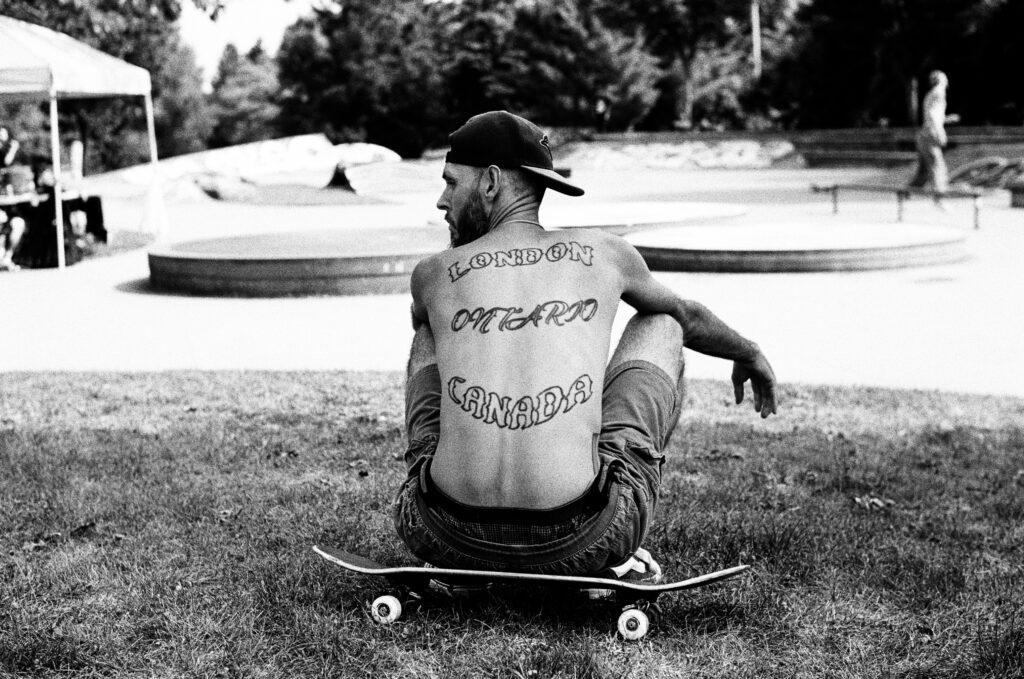
When August 16, 2025, rolled around, I donned my dopest sneakers, grungiest shorts, and most sun-bleached T-shirt and headed to the Kiwanis Skatepark. With its the recent induction into the Olympics, skateboarding has transitioned from an artform and counterculture lifestyle to a serious sport in which competitors train like Olympic athletes. Thankfully, the people I encountered at the skate park belonged to the former era of skateboarding, the one I remember from my youth. The only sixpacks in sight were on ice, the only performance enhancing supplements were THC and nicotine, and the only protective equipment was torn denim and a thick layer of tattoo ink. Don’t get me wrong, these guys (there were no women competitors) were brilliant athletes, they just didn’t imbue that healthy-living, gym vibe that you get from some of those Olympic skaters.
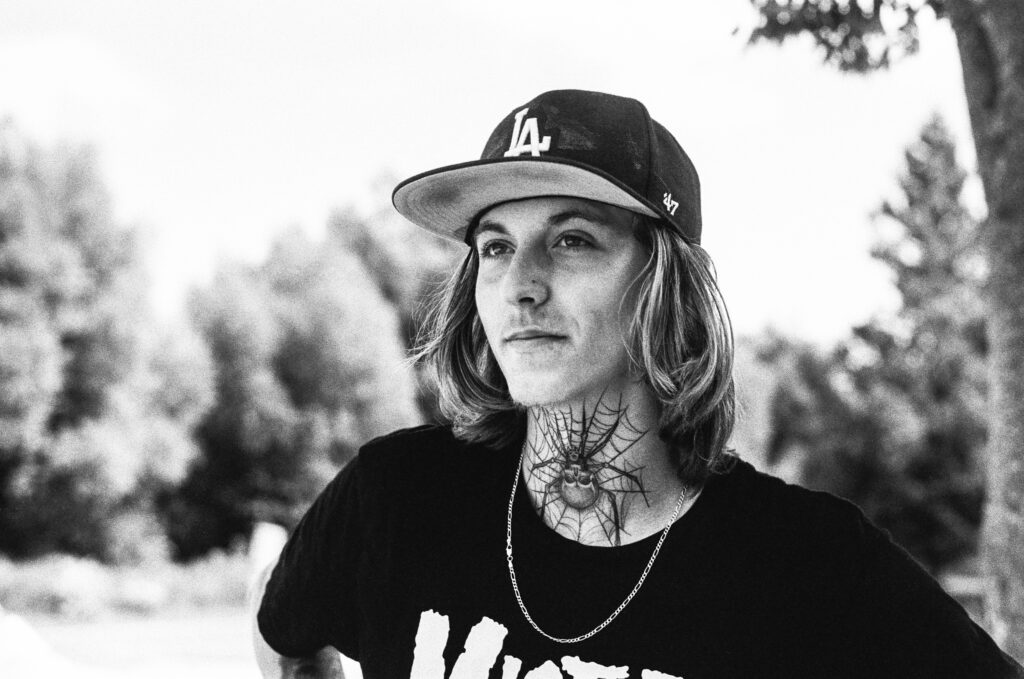
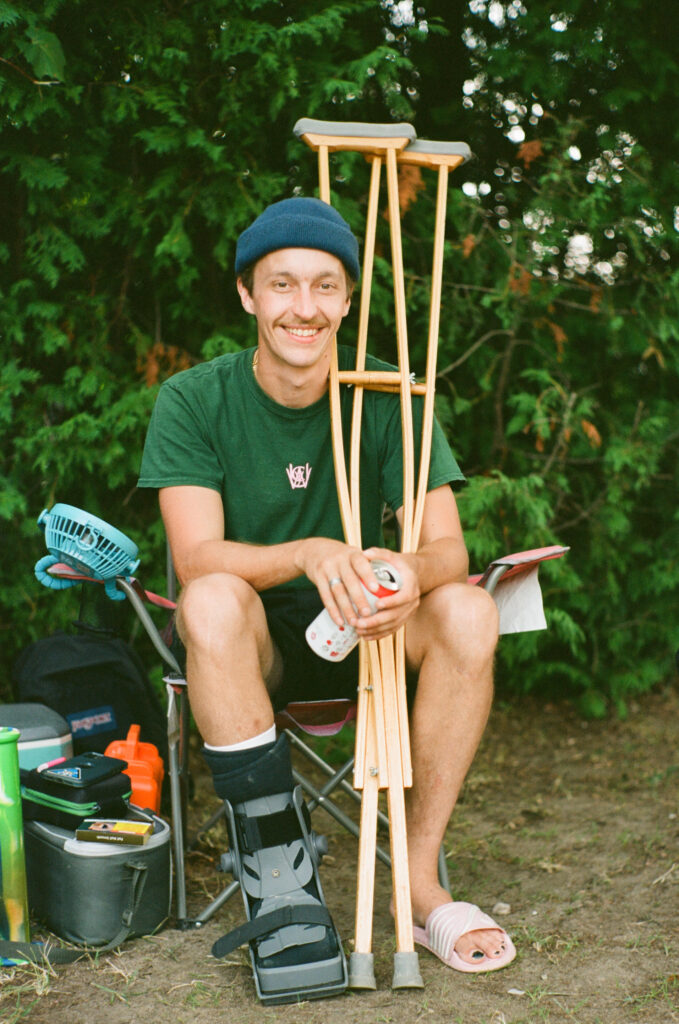
When I first arrived, I was nervous and intimidated; it felt like I was sauntering up uninvited to the cool kids in the high school smoking section. But everyone was welcoming, and before long I was moving around the park with conviction capturing the skaters in flight. For cameras, I brought my Leica M6 with a 50mm Summilux and a Rolleiflex 2.8F Planar. I shot both black and white and colour film. I quickly realized it’s not easy shooting fast moving tricks on manual-focus film cameras. And one must be mindful not to get a board in the face or to impede the line of attack. I now have a newfound appreciation for the photographs I so admired in those old Thrasher magazines.
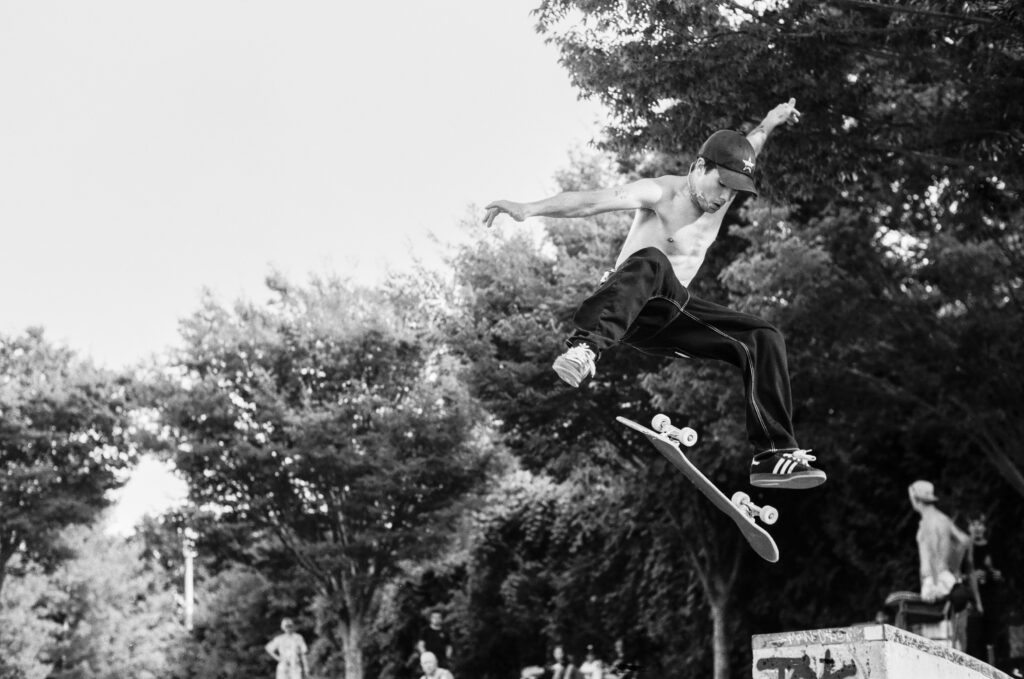
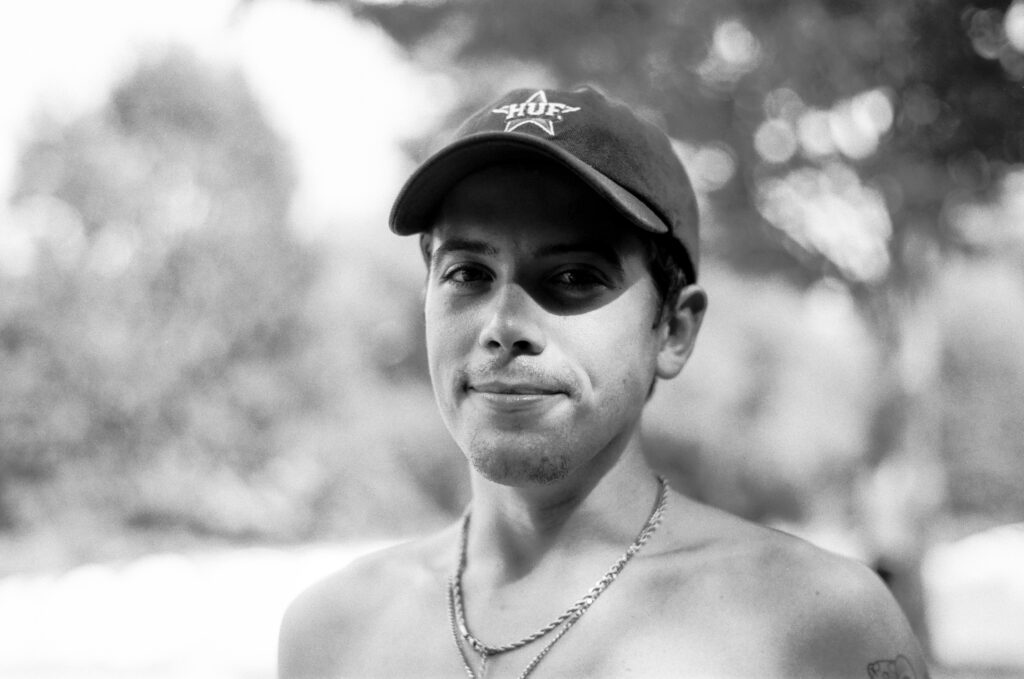
As I photographed the skaters that afternoon, I realized that we were a lot alike. Of the hundreds of complex tricks attempted at the competition, only a handful were successfully landed. To be a skateboarder is to fail again and again. Photography is also a pursuit of constant failure: so many shots fall flat and so few land. But admittedly a bad photo is a lot easier on the knees than a poorly executed backside boardslide. Shown here are my best attempts at skate photography. If you find the photos hard on the eyes, keep in mind that my board skills are a lot worse.
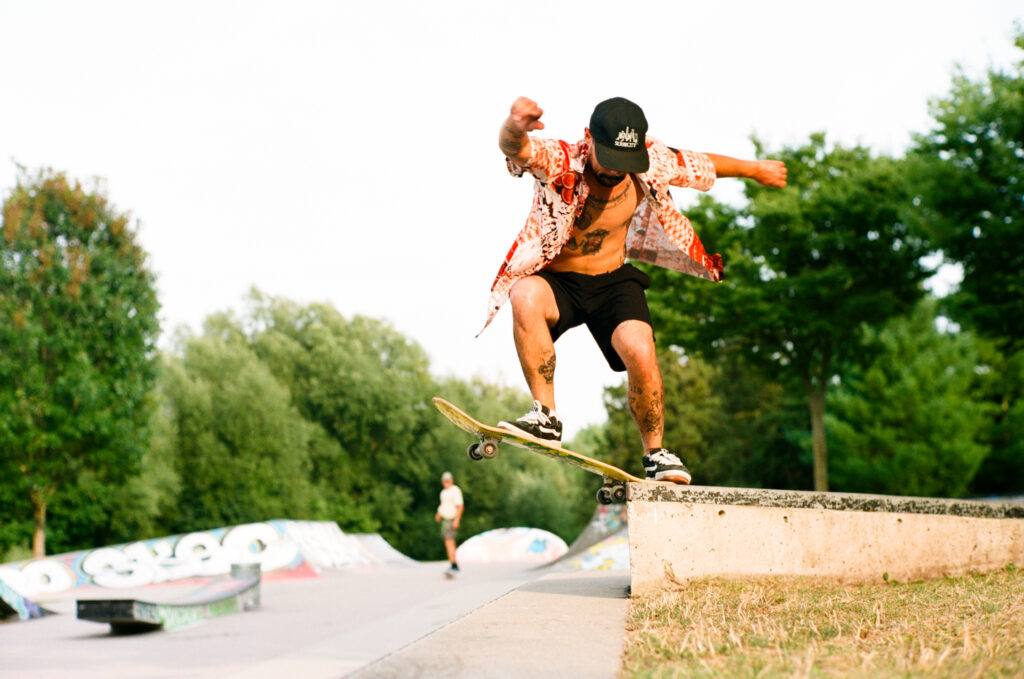
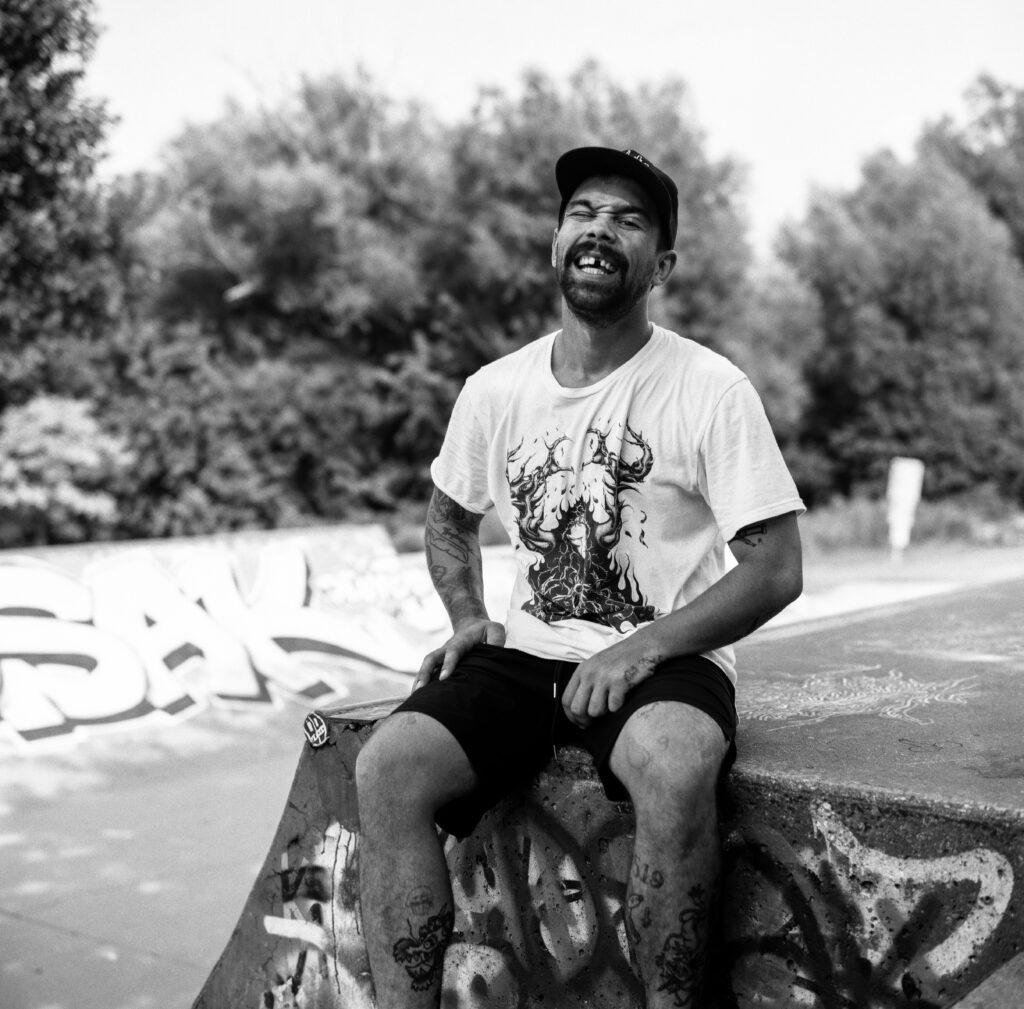
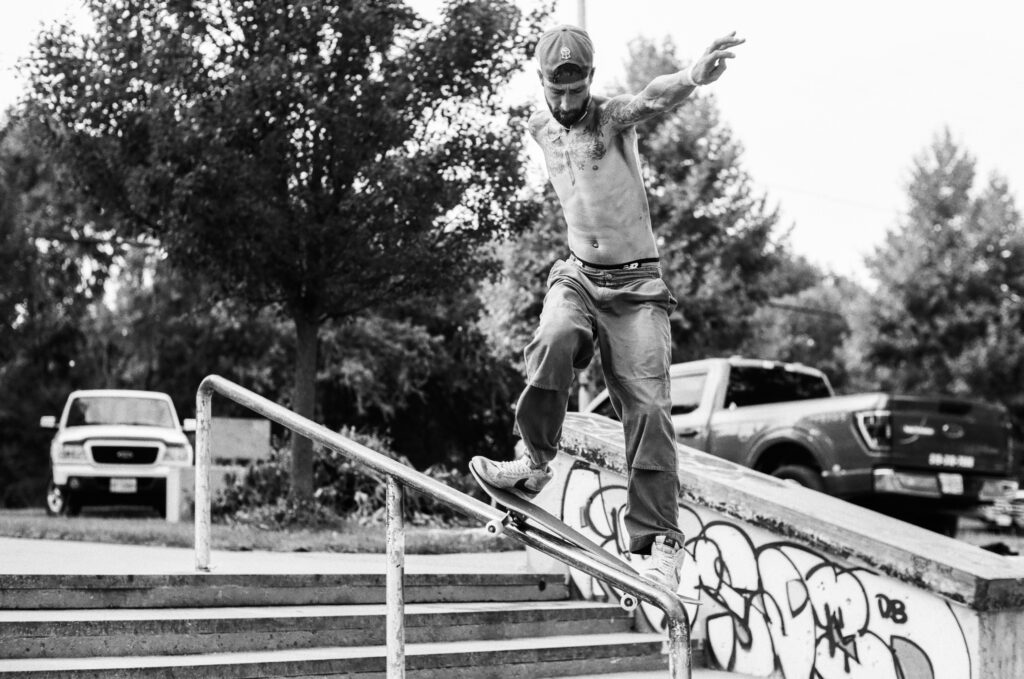
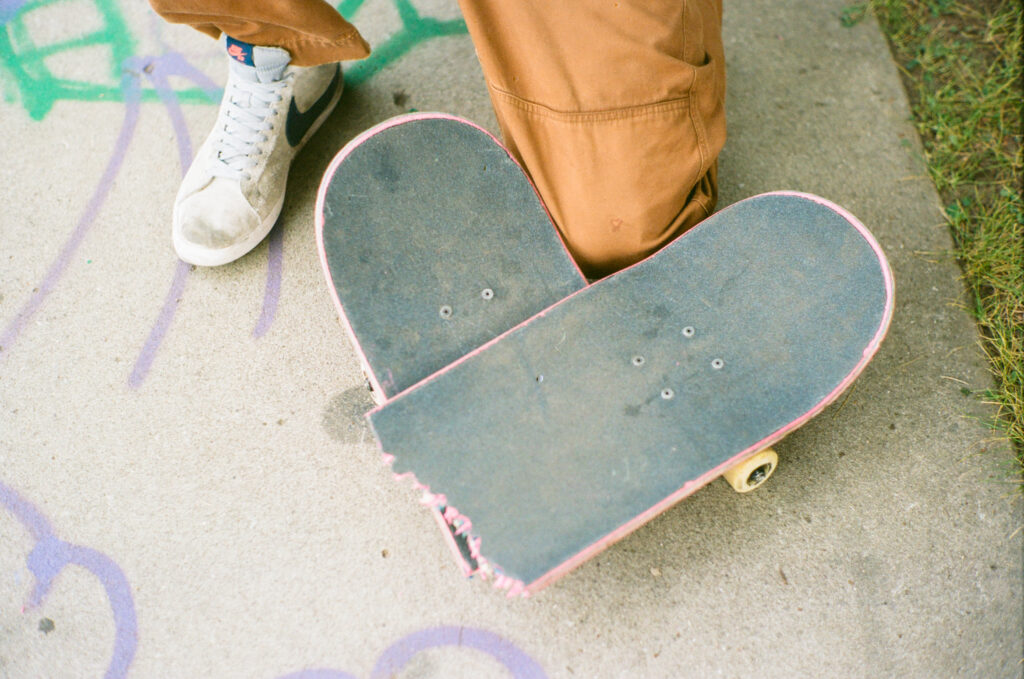
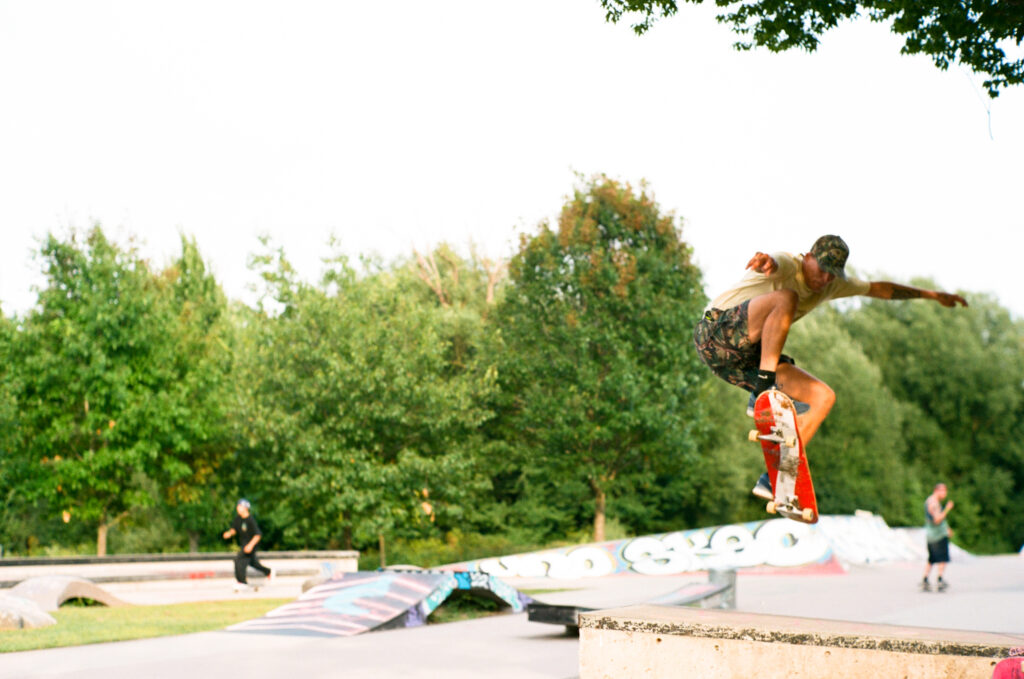
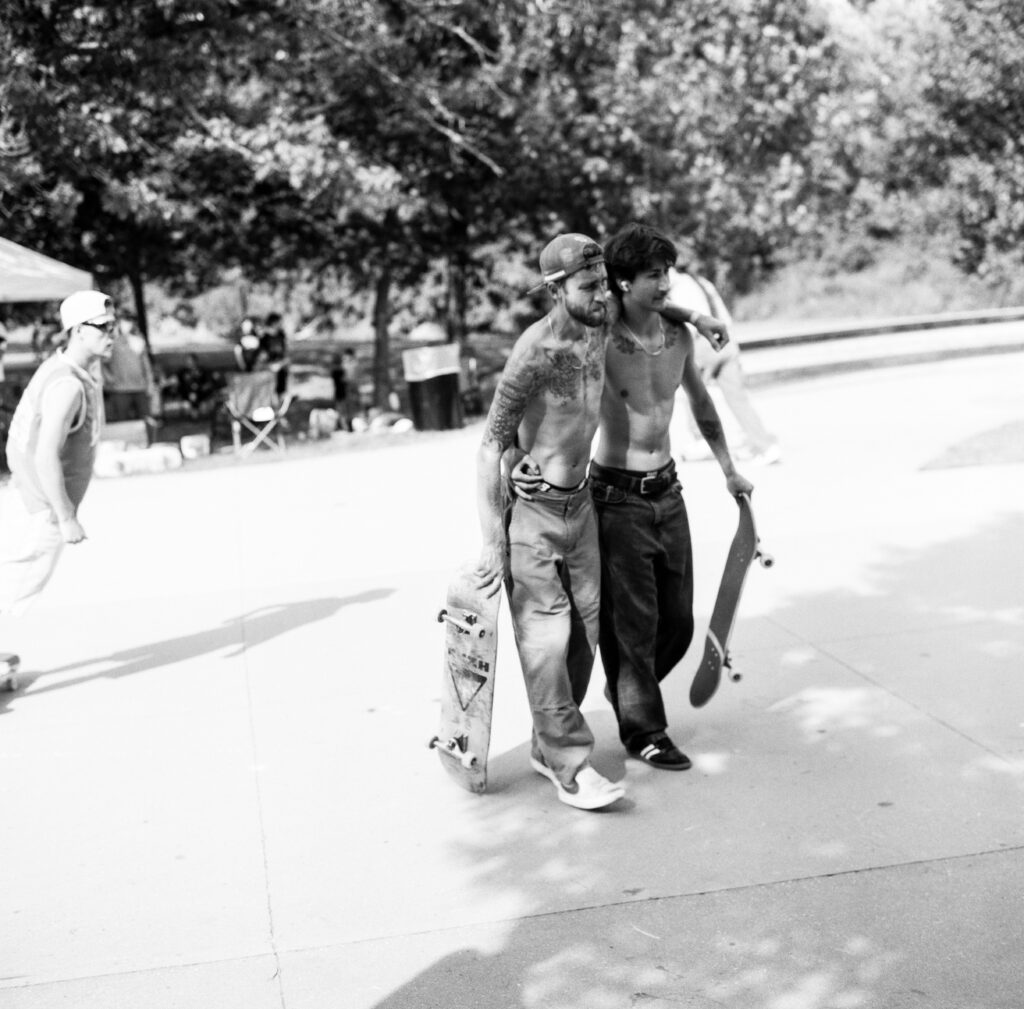
Many thanks to the London Skateboard Co-operative and HZRD Skateboarding who helped organize the Kiwanis Jam. If you’d like to see more of my photos, you can find me on Instagram and at Leica Fotografie International.
Share this post:
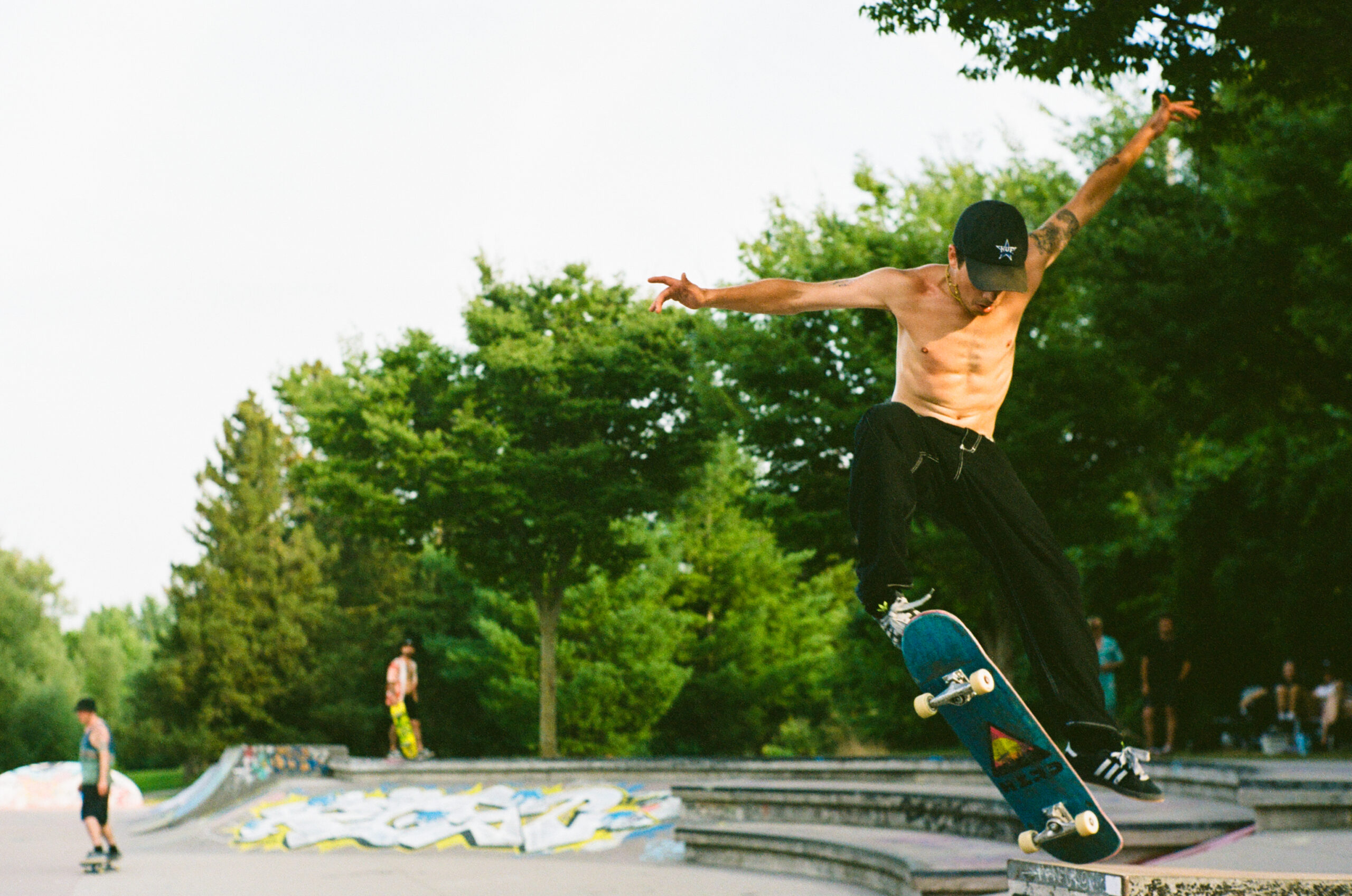

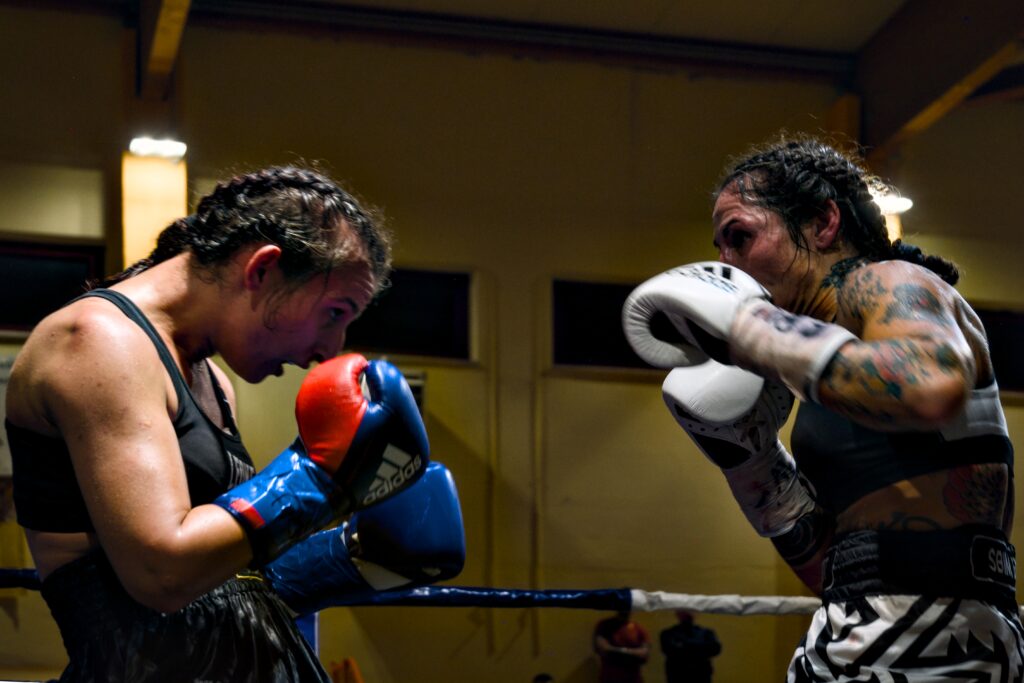
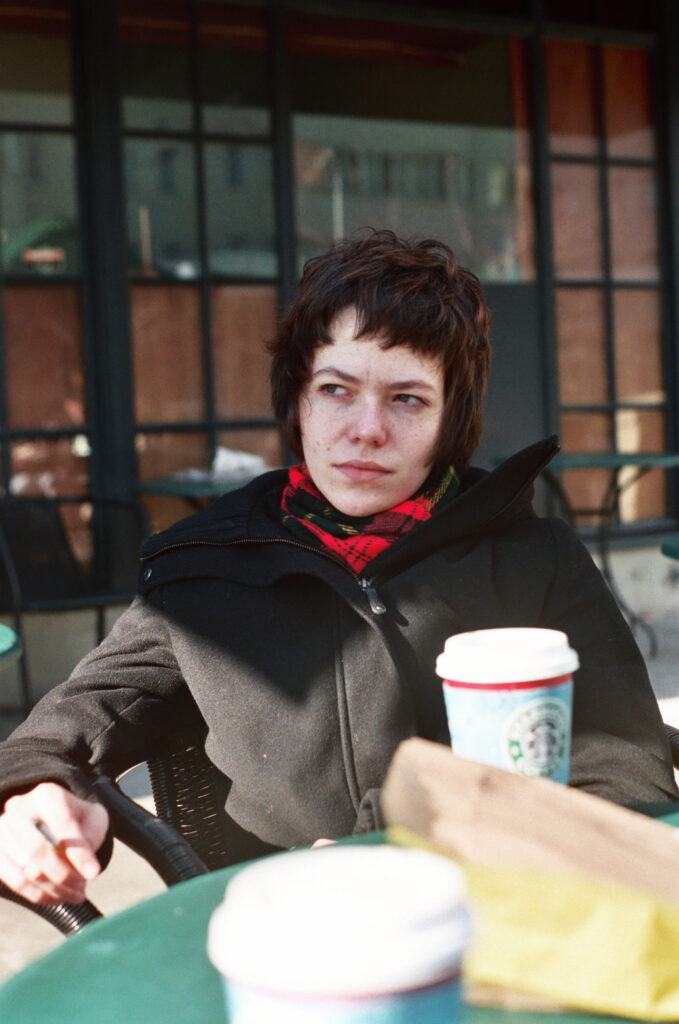
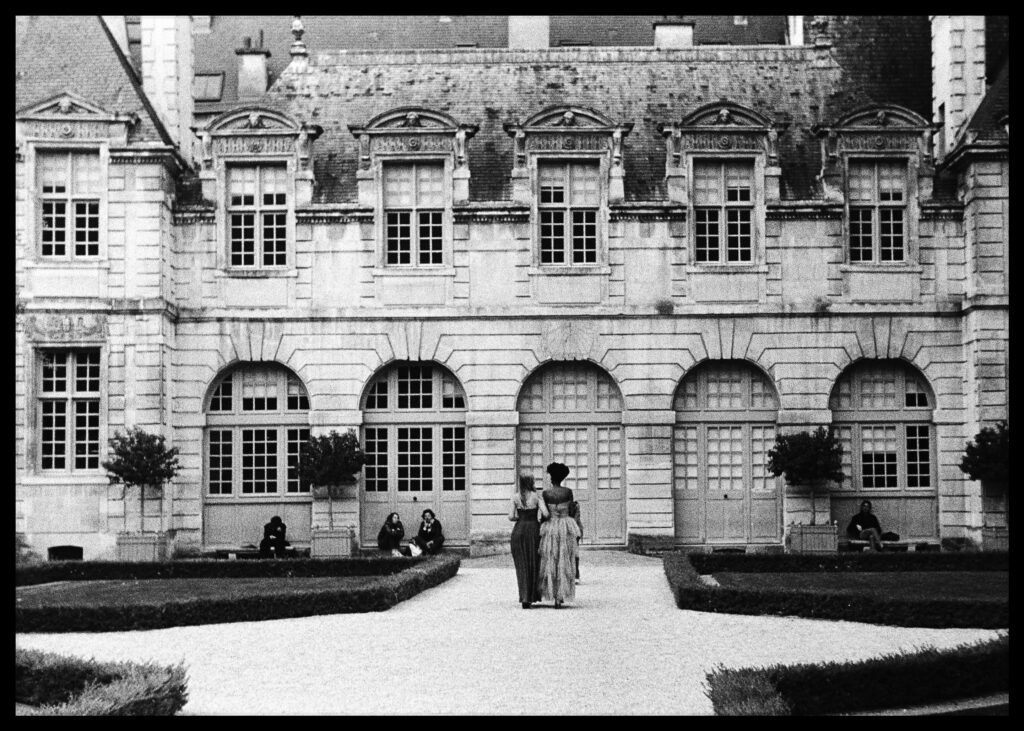
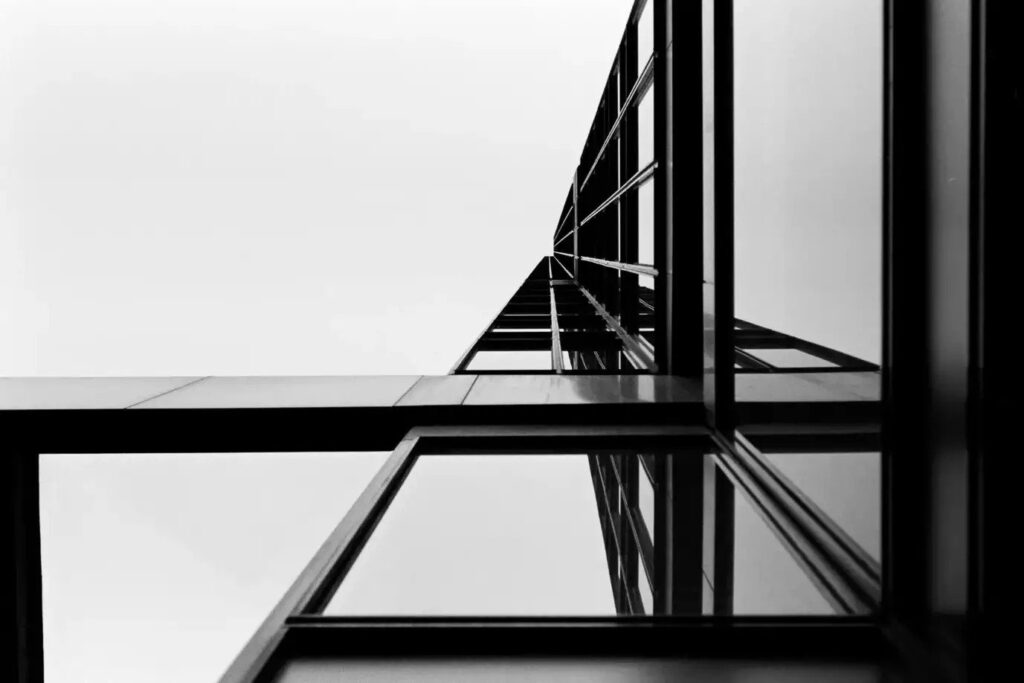
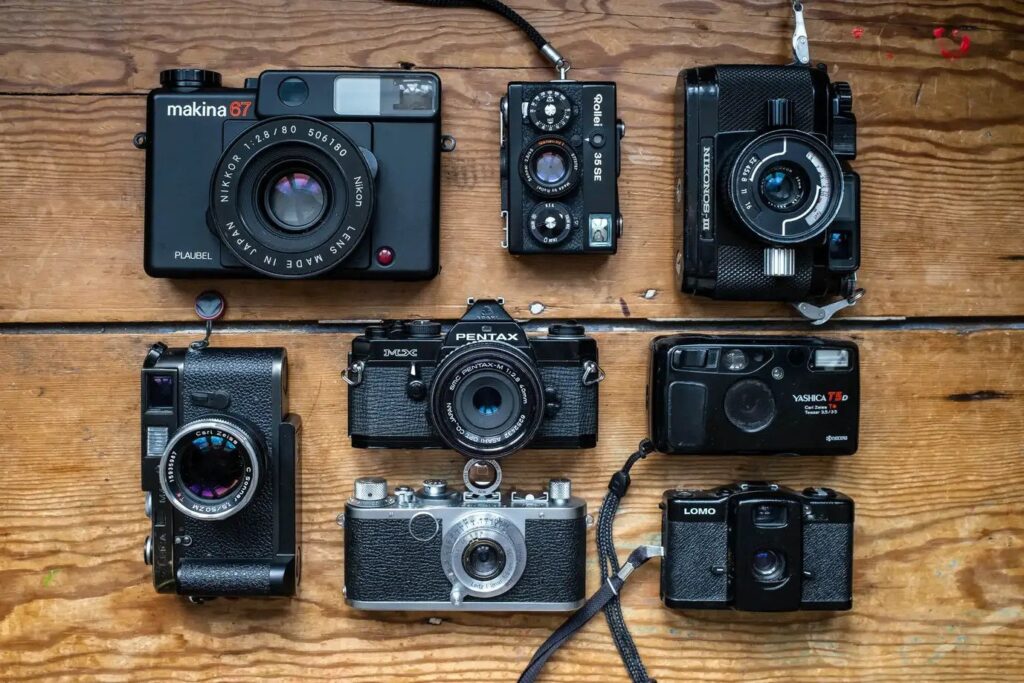
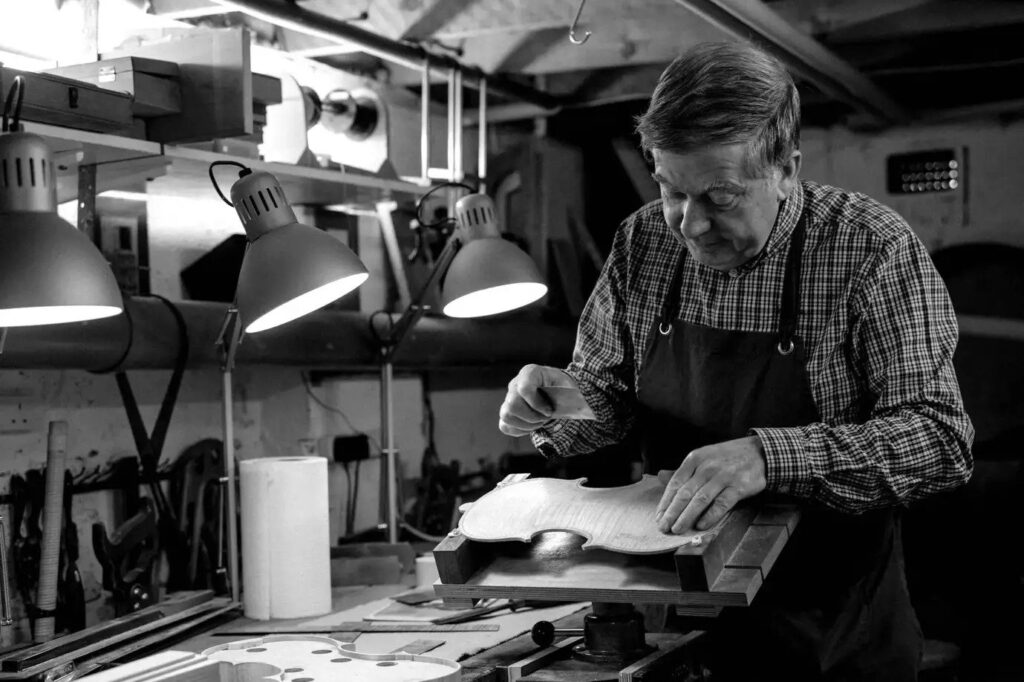
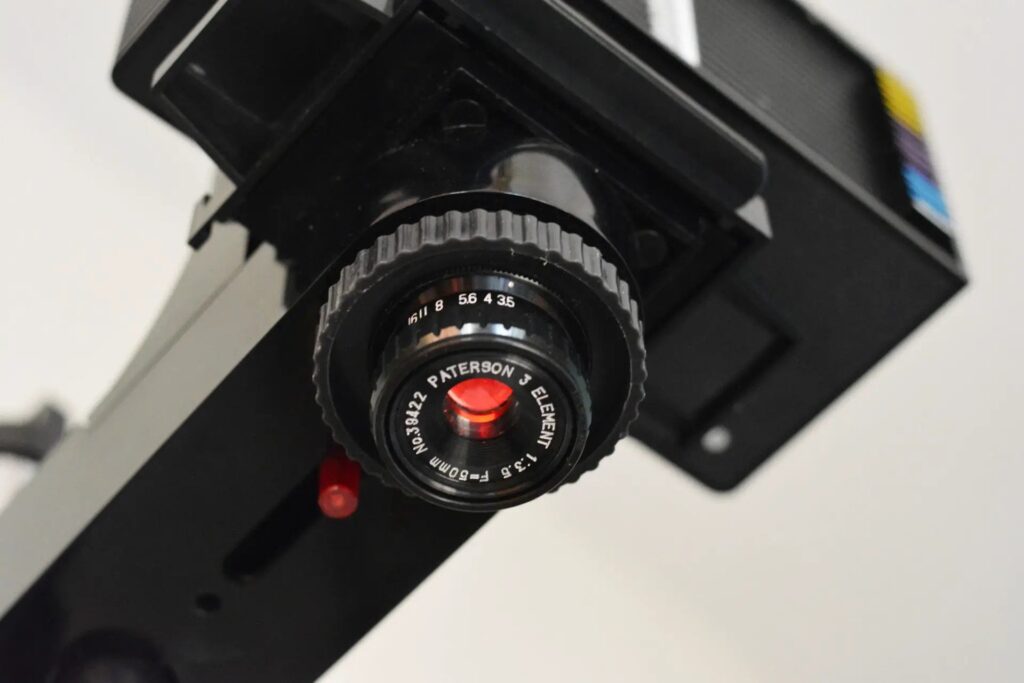
Comments
Bill Brown on The Kiwanis Jam Skateboarding Competition on Film
Comment posted: 04/10/2025
Comment posted: 04/10/2025
Comment posted: 04/10/2025
Louis A. Sousa on The Kiwanis Jam Skateboarding Competition on Film
Comment posted: 04/10/2025
Comment posted: 04/10/2025
Jeffery Luhn on The Kiwanis Jam Skateboarding Competition on Film
Comment posted: 04/10/2025
You got some great shots! How did the subjects react to your film cameras? Every time I photograph young people, they ask, "Can I see it?" After explaining that I'm shooting film, which would seem obvious because my Zeiss has a bellows, they look at me with a furrowed brow. Only a few get it. It's a brave new world out there.
Comment posted: 04/10/2025
Marco Andrés on The Kiwanis Jam Skateboarding Competition on Film
Comment posted: 04/10/2025
These images are superb. Impeccable framing. The colour pops. Mix of colour and b/w. Interesting to compare with Andrea Monti’s approach
https://www.35mmc.com/02/10/2025/a-few-more-shots-from-an-urban-exploration-trip/
The fact that you were a skateboarder gives you the advantage of instinctively knowing how/when to find the « decisive moment ».
You and your subjects were in the zone.
These images show a variety of aspects of skateboarding, not only at play but at rest [and longing, with a broken ankle, a broken skateboard]. The lead image is … ¿Need I say any more?
Comment posted: 04/10/2025
Christopher Welch on The Kiwanis Jam Skateboarding Competition on Film
Comment posted: 12/10/2025
Comment posted: 12/10/2025